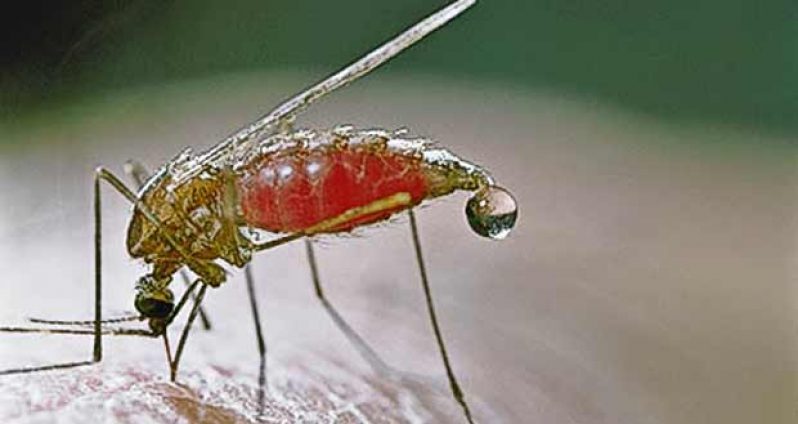GUYANA joined with 188 other countries on Friday, to observe April 25 as World Malaria Day, as designated by the World Health Organisation (WHO). The observance is in keeping with the thrust towards achieving the Millennium Development Goals (MDGs) that this country also adopted in 2000, through the Millennium Development Declaration.
The observance is in keeping with the thrust towards achieving the Millennium Development Goals (MDGs) that this country also adopted in 2000, through the Millennium Development Declaration.
This country and the other WHO nations have continuously shown that, with increasing resolute political commitment and expanded funding in a globalised effort, incidence of malaria can be significantly reduced.
Malaria is estimated to have caused 627,000 deaths annually, with more than 200 million cases occurring, the majority going unrecorded or unregistered.
This stark reality has brought the sentiment of ‘Invest in the future; Defeat malaria’ to be declared as the theme for 2014 and 2015 with the goal being to energise commitment to fight the disease.
Interior Regions
According to the Guyana Country Cooperation Strategy 2010-2015, the local endemic is mainly confined to interior Regions: 1 (Barima-Waini), 7 (Cuyuni/Mazaruni), 8 (Potaro/Siparuni) and 9 (Upper Takatu/Upper Essequibo) with the most affected groups being the migrant population, miners and Amerindians.
The report further stated that the ratio of male to female malaria patients is 4:1 with 78.2 percent males and 21.8 percent females.
Over the last seven years, the epidemiological profile of malaria in Guyana changed considerably to reflect a significant reduction in the total number of cases since 2000.
The official compilation for 2007 indicated that there were 11,657 cases during that year, representing a 51.5 percent decrease in the total number, when compared to 2000, which reported 24,018 cases.
In addition, there has been a marked reduction in malaria related mortality, from 34 deaths in 1998 to 10 in 2007, 71 percent less.
During the post-World War era, the advancement of international human rights and civil liberties has paved the way for continued investment and political commitment against the malaria plague, which has seen widespread implications across the social and economic spectrums.
Health has been considered the right of every citizen in Guyana, although it is not the obligation of one entity to ensure that care and education are advanced in any developing country.
Administrative restructuring
To ensure the decentralisation of health care, administrative restructuring was marked in 2005 with the passage of the Regional Health Authority (RHA) Act and the Ministry of Health Act, which changed the traditional role of the ministry from a provider to that of a regulator.
This restructuring has led to the increased capacity of Regional Democratic Councils (RDCs) to provide health care for their respective Administrative Regions. The effort, however, does not solely reside with the Government but with civil society, non-governmental organisations (NGOs), as well as independent Private Sector entities resolving to observe the Health Facilities Licensing Regulation (2008).
It is important to note that national endeavours of such importance as the eradication of malaria as a communicable disease is not without its fair share of challenges, which, ultimately, impact the quality, availability and accessibility of health services.
This is most prevalent, particularly in under-served hinterland regions. These challenges are reflective of both social and economic burdens faced by Caribbean countries in implementation and evaluation.
By Derwayne Wills



.jpg)








